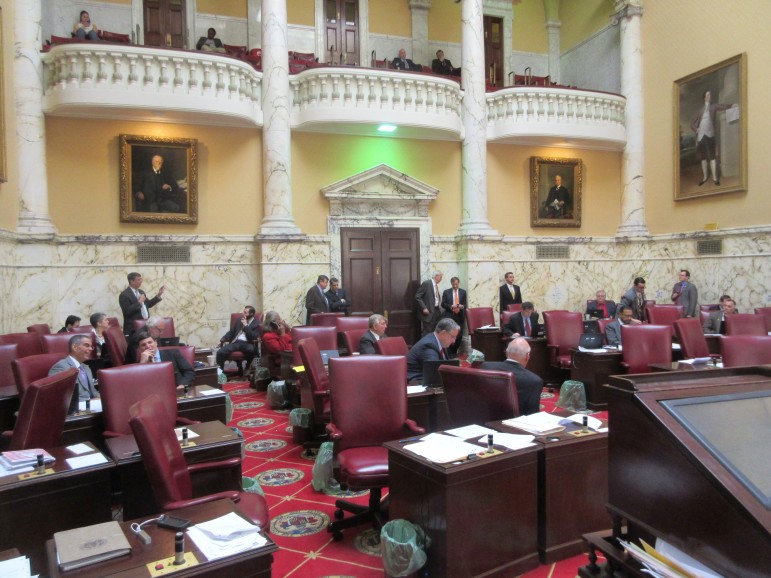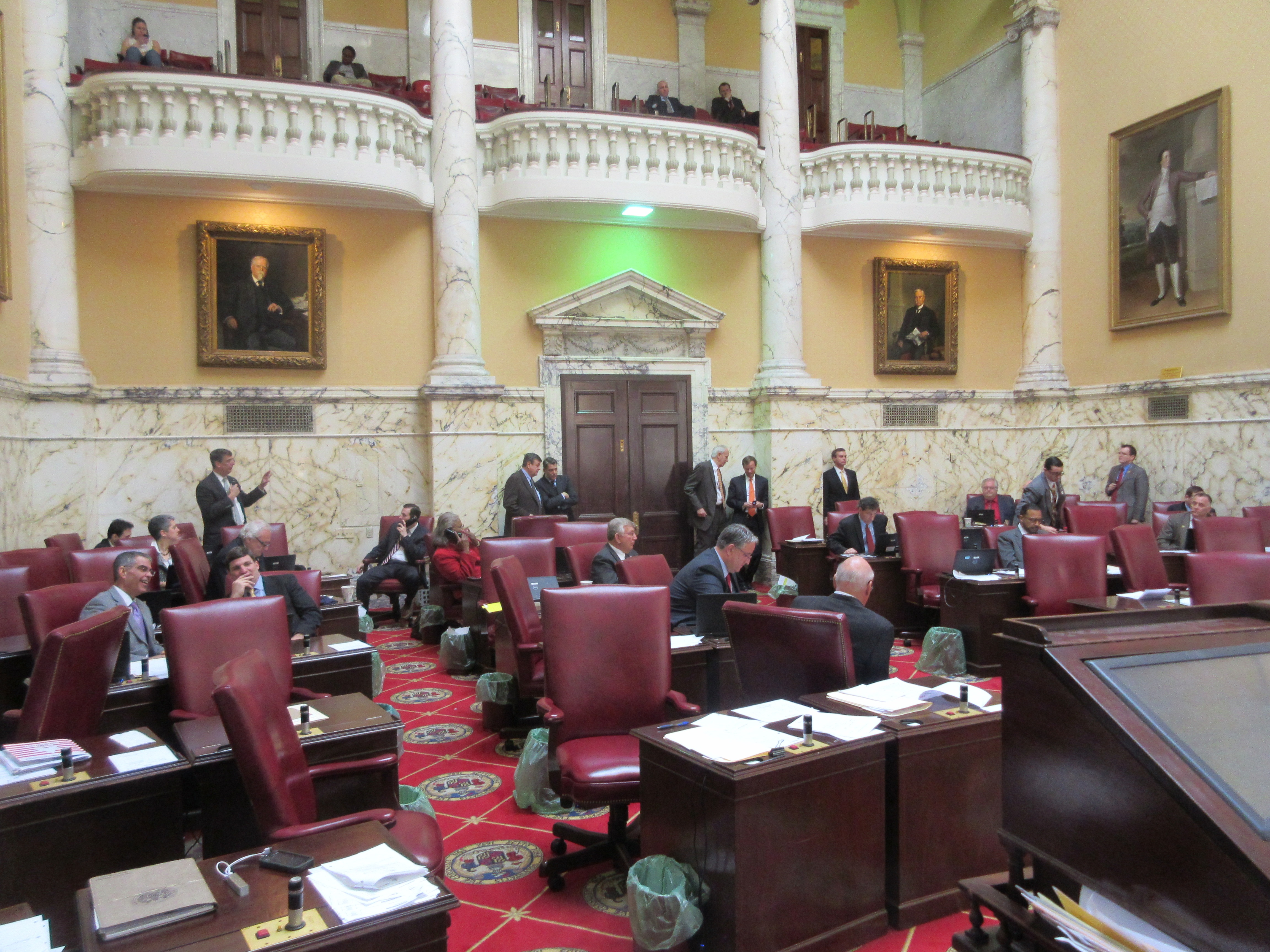By Len Lazarick

The debate scene on the Senate floor Wednesday over the transportation scoring bill.
A half dozen senators stood chatting at the back wall of the Senate chamber. Another half dozen talked, ate or checked their phones in the Senate lounge. A third of the seats on the Senate floor were empty, a vice chairman sat on the side at a press table, the Senate president was nowhere to be seen and the president pro-tem was presiding as the back-and-forth droned on.
The Republican minority — 14 senators out of 47 — was using the only weapon they had to slow the down the fast moving train called the Maryland Open Transportation Investment Decision Act of 2016, HB1013: they talked.
That mouthful of a bill was considered one of the prime power grabs by the Democratic legislature over the Republican governor. There was a long list of power grabs on the white board of the Senate Republican caucus room, but the governor and his legislative allies had made stopping the transportation bill a top priority.
Set up for a smack down

Senate Minority Leader J.B. Jennings talks to Senate President Pro-Tem Nathaniel McFadden during the debate.
The Democratic leaders had made putting the bill on his desk by the end of the week their priority, forcing him to act on it in the week before the lawmakers left town. A veto sets Hogan up for a quick override smack down.
That’s why the Democrats shut off debate after not much more than 90 minutes — a puny filibuster as these things go. But in a highly unusual power play, the Democrats also limited debate to an hour when the bill comes up for a final vote, likely on Thursday.
Veteran senators and reporters could not recall seeing that sort of double whammy — stop talking now, and don’t try to keep it up tomorrow. The rules of the Senate don’t say they can’t do that, but they haven’t done it in the past, even though their back-up rule book, Mason’s Manual of Legislative Procedure, suggests they can.
Bill does less than claimed
The trouble with the fight is that the bill as amended by the House of Delegates does far less to hamper the governor and his transportation secretary than when it was first introduced. The bill now says the secretary of transportation must come up with an elaborate scoring system using nine criteria: safety and security; system preservation; quality of service; environmental stewardship; community vitality; economic prosperity; equitable access to transportation; cost effectiveness and return on investment; and local priorities and planning.
As originally introduced, the bill set percentages and metrics for each of those categories and subcategories within them. All those percentages have now been stripped from the bill. Based on the scoring Hogan’s transportation secretary would develop, projects with higher scores are supposed to be built before projects with lower scores. If the governor and transportation planners decide otherwise, they have to explain why. The penalty if they don’t? None specified.
The only real negative in the bill is a weighting factor giving higher population (and Democratic) counties an edge.
Surely Hogan’s savvy Transportation Secretary Pete Rahn can come up with a scoring system that would pretty much justify everything that Hogan has done. Some of his staff is already drafting a score card to comply with the bill and do just that.
Talking points don’t hold up
Republicans have maintained that the bill places a heavy thumb on the scale for mass transit, and that all the money would wind up going to Montgomery County. But those are political talking points that don’t hold up as the bill stands now.
What’s more, this scoring system is on top of a very elaborate system for justifying transportation projects already in place in Maryland law. That elaborate process measures traffic, congestion, population trends, economic goals, smart growth and local priorities, with public meetings and reports at the end. But the process is not considered very accessible or open. How things get prioritized is not clear.
The big beef
The big beef for the Dems is that Hogan killed Baltimore’s Red Line light rail project because it would have costs billions more than estimated. He then distributed the money to highway projects in areas that voted for him, which happen to be 20 out of 24 jurisdictions.
If Anthony Brown had been elected governor, he would have built the Red Line in Baltimore and taken care of projects in the other three counties that voted for him, with squat left over for the 20 that didn’t support him.
Frustrated with governors who don’t do things as they like, legislators pass laws to make them do things they want. This started long before Hogan; he’s just the latest target.
That’s what all the talk about mandates and mandate relief this session is about — making governors spend what the legislators want them to spend. The odd thing is that this highest profile fight about a legislative power grab has the lowest price tag, about $2.4 million and half that after the transportation scoring system is created.




Recent Comments